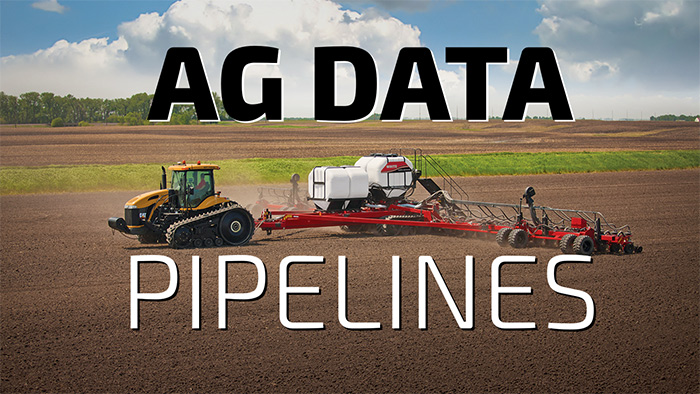Editor's Note: Todd Janzen, attorney at Janzen Agricultural Law in Indianapolis, grew up on a Kansas grain and livestock farm and now practices law at the intersection of ag and technology. Todd is chair of the American Bar Association’s Agricultural Management Committee and authors a blog addressing legal issues facing agriculture. You can see more posts from Todd at JanzenAgLaw.com.
Keeping track of the ag data products on the market right now could make a farmer’s head swim. Which product does what? Who controls the data? More importantly, which products use which streams of data from my farm? For a long time, it has been hard to classify these data streams, but thanks to groups like AgGateway and the Ag Data Transparency Evaluator, these ag data “pipelines” are starting to take shape. This post explores the current definitions of the different ag data pipelines coming off the farm.

The Ag Data Transparency Evaluator asks companies to define in their contracts and policies which types of data a certain product collects from the farmer. The Transparency Evaluator forces companies to pick from five different categories, using AgGateway’s bullet-point definitions rather than creating new categories. These are:
- Agronomic Data. Agronomic data includes seed data, hybrid identification, planting data, yield data, pesticide and herbicide data, crop disease data, and nutrient information.
- Farm Management Data. Farm Management Data includes business operations data, such as financial and tax information, operating and loan information, HR data, farm labor contracts, supply chain data, transportation and storage data, commodity prices, and federal reporting and compliance data.
- Land Data. Land data includes conservation practices, tillage, soil and fertility information, watershed and drainage data, topographical information, and GIS and UAV imagery.
- Machine Data. Machine data includes telematics, fuel usage, machine load, equipment function, and remote sensing data such as radar, spectral, and Lidar.
- Weather Data. Information derived from weather stations, soil probes, and sensor data, including wind speed, direction, precipitation, temperature, humidity, barometric pressure, etc.
These five categories are not perfect. There is some overlap and there are some gaps. In the past, companies used definitions that were more vague and less helpful to the farmer, for instance, referring to ag data as “personal information” which is typically identifying information. But these definitions are a step in the right direction because companies are finally having to define the data pipelines they are tapping into with their products.
AGCO has great example. I recently read a press release where AGCO clearly explained its FUSE Technologies take data from two of these pipelines, “agronomic data” and “machine data,” and treats them differently from a privacy perspective. That is easy for a farmer to understand. And that’s what its all about.



![[Technology Corner] A Big Step Forward for Interoperability & Data Sharing](https://www.precisionfarmingdealer.com/ext/resources/2025/12/12/A-Big-Step-Forward-for-Interoperability--Data-Sharing.webp?height=290&t=1765565632&width=400)


